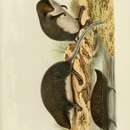en
names in breadcrumbs


Although there are descriptions of Nectogale elegans that date back to as early as 1870, not much is known about it.
Perception Channels: tactile ; chemical
US Federal List: no special status
CITES: no special status
IUCN Red List of Threatened Species: least concern
Nectogale elegans is an aquatic species that is well adapted to swimming and diving for its food. Its teeth are well adapted for eating small fish. Foods eaten by N. elegans include insects and larvae, crustaceans, and small fish.
Animal Foods: fish; insects; terrestrial non-insect arthropods
Primary Diet: carnivore (Piscivore , Insectivore , Eats non-insect arthropods)
Nectogale elegans is a monotypic species found in the Oriental region of the world (Tate 1947). The Elegant Water Shrew is also found in the Himalayas and southeast Tibet, hence one of its other names, the Tibetan Water Shrew. (Corbet & Hill 1980)
Biogeographic Regions: oriental (Native )
As its common names would suggest, N. elegans is found in or near water. It can be found in clean, mountain streams of China, Tibet, Nepal, etc. The shrew lives both in the water and in stream beds. (Parker 1990, 490)
Range elevation: 900 to 2270 m.
Habitat Regions: temperate ; terrestrial
Terrestrial Biomes: mountains
Aquatic Biomes: rivers and streams
The Elegant Water Shrew has soft, velvety fur. Its dorsal side is described as having slate-colored fur mixed in with long, white guard hairs (Tate, 1947). The ventral side of the shrew is similar in color to its dorsal side, but without the guard hairs (Parker 1990). The neutral fur coloring of Nectogale elegans allows it to blend in easily with its background.
Its tail, which is moderately thick, is basically black except for the stiff-haired, white, lateral fringes that aid it in swimming and paddling. (Tate, 1947) These fringes merge together along the shrew's underside and give its tail a long pyramidal appearance (ITSES 1995, 10/8/01).
The streamlined shape of the shrew is enhanced by the strong reduction of its pinnae in its ears (Vaughan, Ryan, Czaplewski 2000, 116-7). In fact, the ears are so small that the outer ear conch can hardly be detected (Tate, 1947).
The only part of the shrew that is not gray is the fur around its mouth, which is cream-colored (Tate, 1947). The shrew also has a relatively long snout (Nowak 1995). The shrew's 28 teeth are adapted to feeding on fish.
On the soles of the shrew's feet are disk-shaped "adhesive" pads (Parker, 1990). These pads may help the shrew climb along wet rocks and may aid in the grasping of its prey (Nowak, 1995). The feet are also broad and webbed and also contain guard hairs to aid in swimming (Tate, 1947). These fringes of stiff, white hairs can be seen along the edges of the digits (Nowak 1995).
The size of the N. elegans is large for a shrew. Its head and body length ranges from 90-128 mm and its tail length alone is about 89-110 mm (Parker, 1990). The Elegant Water Shrew is about the same size as the Musk Shrew, Suncus murinus (Tate, 1947).
Form and function go hand-in-hand in the Elegant Water Shrew. Its gray-and-white color along with iridescent fur allow the Elegant Water Shrew to blend in with its surroundings. The shape of the shrew makes it easier to dive for food. In addition to swimming and diving well, the shrew's adaptations also allow it to burrow into the banks of the streams it inhabits.
Range mass: 25 to 45 g.
Range length: 90 to 128 mm.
Other Physical Features: endothermic ; homoiothermic; bilateral symmetry
No information is known about the reproduction of the Nectogale elegans.
Key Reproductive Features: gonochoric/gonochoristic/dioecious (sexes separate); sexual
The elegant water shrew (Nectogale elegans)[2] is a species of mammal in the subfamily Soricinae of the family Soricidae. It is the only species within the genus Nectogale.[3] It lives in Sikkim and China.
The elegant water shrew (Nectogale elegans) is a species of mammal in the subfamily Soricinae of the family Soricidae. It is the only species within the genus Nectogale. It lives in Sikkim and China.